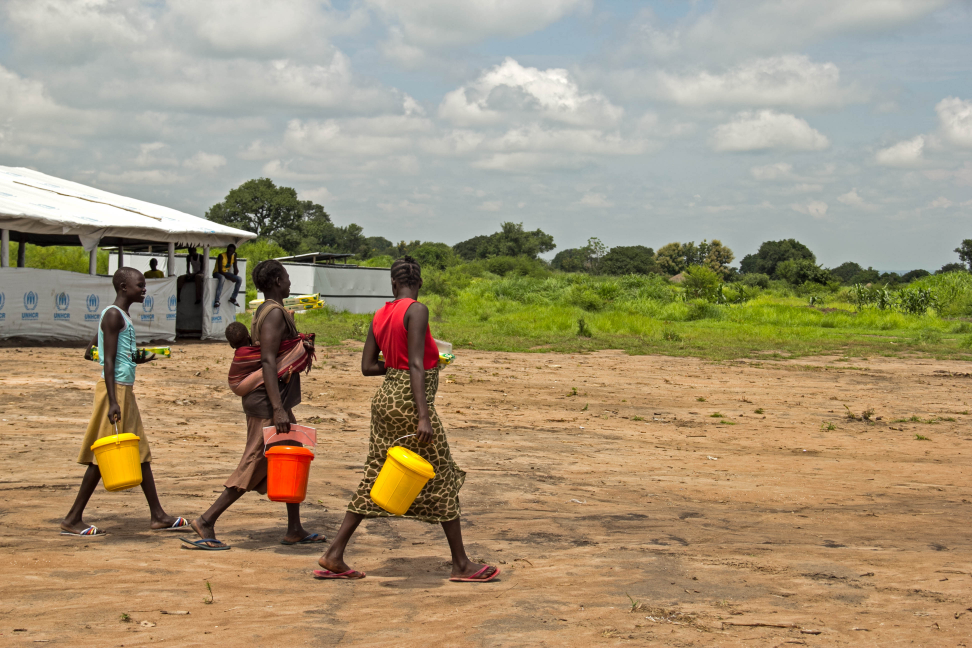The latest from Tearfund in Afghanistan...

Bryony Norman, Project Coordinator
So we are one month on from my previous blog, please accept my sincerest apologies for my silence of late! My excuse? A much needed R&;R and some annual leave in Cape Town and the UK – both experiencing unusually sunny weather for this time of year…beautiful. After a pretty hectic beginning to the project, meeting with or skype-interviewing 20 different organisations, I hope that you will forgive my break in contact and understand my need for a holiday!
And so I have returned to Kabul. It is cold returning on a much delayed flight from Dubai airport, I arrived a few hours later than planned on Monday, and have been catching up on the project ever since. I have this week contacted the final organisations with which I hope to meet, and have arranged meetings for the next week and a half. I met earlier today with a particularly inspiring organisation. Their approach to beneficiary accountability and their perseverance to measure project impact and quality, in the midst of highly insecure project environments, was particularly impressive and I hope that some of the good practice that was apparent in the way in which they work will feed into the good practice that I begin to document and develop in the coming months.
One thing that has been really interesting about the research interviews I’ve conducted to date, has been the opportunity to meet with a variety of different organisations, of all sizes and approaches, and to learn about their individual approaches to project monitoring and beneficiary accountability. Whilst there is ample variety in the approaches which are undertaken by them, hearing about the issues that face or concern organisations collectively has also given me a good sense of the issues that I should aim to address in developing good practice in project monitoring and beneficiary accountability for remotely-managed projects.
There continues to be strong enthusiasm from those organisations that I’ve contacted, particularly in the areas of developing systems to measure and record project impact. It would appear from preliminary discussions with institutional donors that this is also something that they are increasingly interested to track. There is a demand to ensure that project progress against indicators and outputs is measured in coordination with project outcomes and impact.
During my time out of Afghanistan on R&;R, a fabulous external consultant undertook a rather daunting visit to Tearfund’s project office in Kandahar in order to facilitate a baseline assessment of Tearfund’s own project monitoring and beneficiary accountability procedures. Part of the purpose of this assessment was to look at the successes and areas for learning from the monitoring and beneficiary accountability procedures. Whilst the report from this assessment is yet to be finalised, preliminary discussions with the consultant have highlighted that the visit was a success (thankfully – this was the consultant’s first visit to the wild west of Kandahar and I for one was jolly glad that they returned safe and sound). They were able to meet not only with Tearfund’s own project staff, but with a selection of beneficiary representatives and with a group of staff from a peer organisation who have been conducting external monitoring of Tearfund’s projects over the past 14 months. I plan to include the highlights, key findings, and recommendations from this report into the broader research report that I will be putting together in the next few weeks.
The coming week and a half should see the completion of the epic research interview journey that I have embarked upon in the past two months, in which 30 different organisations have each participated in direct interviews, and in which up to 15 organisations have participated through email correspondence.
Meetings with the final representatives from institutional donor organisations, a coordinating body for relief agencies in Afghanistan, as well as humanitarian and development organisations both within Afghanistan and in the Republic of South Sudan, Darfur, and Somalia, will be undertaken in the next few days. I’m seeing evidence already that by contacting the breadth of agencies that has been selected for this project, a wealth of information is coming together. Each interview has been (or will be) written up in detail(ad infinitum …) and the results will be analysed and reported on, and will become the ‘bread and butter’ of the mid-term research report that I will be putting together in the next two to three weeks.
Following the drafting of this report, it will be circulated to each individual project stakeholder, and posted on the project’s profile page on the HIF website. Gosh, I’ve said it now! It needs to get done…watch this space!) When it is posted, I would welcome any comments that you have on the content, areas of focus (e.g. issues raised), and proposed next steps. As my earlier blogs have hopefully emphasised, I aim for this project to be as demand-led by humanitarian and/or development practitioners as possible and so I value constant input and comments. Likewise, should you have any comments in response to this blog, please don’t hesitate to post and I’ll endeavour to get back to you.
Until next time (hopefully not quite so long this time round)!
Bryony
Stay updated
Sign up for our newsletter to receive regular updates on resources, news, and insights like this. Don’t miss out on important information that can help you stay informed and engaged.
Related articles
.png)


Explore Elrha
Learn more about our mission, the organisations we support, and the resources we provide to drive research and innovation in humanitarian response.